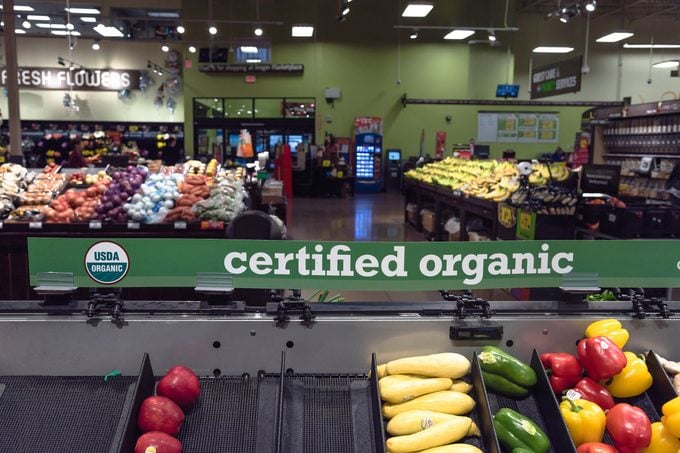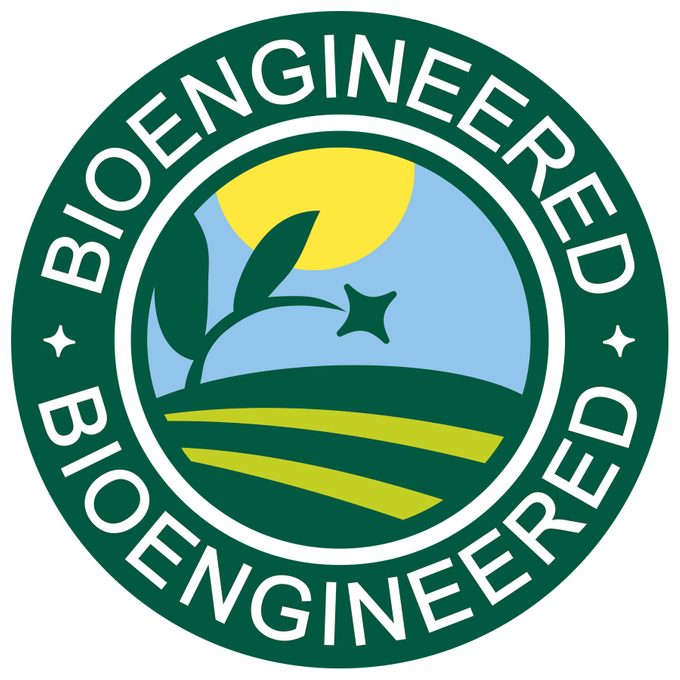The Label We’ve All Been Waiting for on Genetically Modified Foods
Updated: Apr. 08, 2019
Wondering what GMOs are and if they're beneficial or pose a threat? Here's what you need to know, and how to tell if a food is genetically modified.

What exactly is a GMO? The official USDA definition is “an organism produced through genetic modification.” What does this really mean, though?
Strictly speaking, all plant breeding methods, including simple cross breeding, alter a plant’s DNA, notes Erin MacGregor, RD, a dietitian in Toronto. “So all agricultural products are genetically modified, technically,” she says. “They have been since the dawn of agriculture, thousands of years ago.” Genetic engineering in today’s conversation, she says, is a more precise and expedient method of modification, however.
“Today, GMOs typically refer to transgenic gene modification,” says Chris Vogliano, MS, RDN, a PhD candidate studying sustainable food systems in developing countries at Massey University in New Zealand. “This technology works by splicing a genetic sequence from one species to an entirely different species to produce a desired outcome.”
If you’re concerned your fridge’s entire food supply is genetically modified, don’t be. “Few GMO crops are available for commercial use at this point,” notes Vogliano. These are soybeans, corn, sugar beets, canola, papayas, and alfalfa. “However, since these crops make up a large portion of our food supply, GMO ingredients are found in most processed foods.” So that means a salad dressing made with canola oil may contain GMOs.
It’s important to know that GMOs aren’t created just for the heck of it. “GMOs result from a specific type of plant breeding in which precise changes are made to a plant’s DNA to give it characteristics that cannot be achieved through traditional plant- breeding methods,” says Neva Cochran, MS, RDN, a dietitian in Dallas, and a volunteer expert for GMO Answers, a resource from the Council of Biotechnology Information. “Scientists conduct research to identify the specific genes responsible for beneficial traits that make crops resistant to disease, pests, or drought. Once the desired gene has been identified, scientists transfer the gene into a plant seed. The result is a genetically modified organism, or GMO.”
Each GMO takes years to appear on grocery shelves. “They are highly regulated, and it is very expensive to bring a new crop to market,” says Cochran. “It takes about 13 years and $130 million before a new seed can get to market.”
Why do GMOs exist?
Sometimes, the benefits created by GMOs are simply to allow your food to last longer. “A recent example of a GMO crop that provides a consumer benefit is the Arctic Apple, which is genetically modified to prevent the browning of the apple once sliced,” says Vogliano.
Another example: the Simplot Innate potato. “It’s bioengineered to form 58 to 72 percent less acrylamide when baked, fried, or roasted at high temperatures,” says Cochran. “Animal studies have found that acrylamide exposure may increase the risk for several types of cancer.”
And Golden Rice has been altered to help prevent childhood blindness. The rice is available in areas in Asia where there is not a consistent, good source of vitamin A, notes Cochran. “They take a gene that produces beta carotene from a marigold and transfer it to the rice seed so it will the produce rice with beta carotene with a golden hue,” she explains.
Are GMOs scary?
“The term ‘GMO’ can sound scary when you first hear about it,” says Vogliano. “However, consumers should feel confident that GMOs on the market are safe to consume and to date have not been linked with any adverse health effects,” he says. “One point I hear often is that GMO wheat is causing the rise of wheat sensitivities. However, this is not true as GMO wheat is not available for commercial use in America.”
A lot goes into making sure that GMO products are safe. “More than 75 studies are performed on each new biotech food crop before it is commercially available in the United States,” explains Cochran. “This ensures they are safe for people, animals, and the environment.”
MacGregor agrees. “We have evidence from over 2,000 studies, many of which are not funded by industry, and over 20 years of GMO consumption by humans and animals, which have produced no evidence that GMOs represent a health risk,” she says.
However, there are some potential downsides to GMOs when it comes to the environment. “As a sustainable food system dietitian, I have concerns over specific GMOs that are designed to withstand high levels of herbicides or pesticides,” says Vogliano. “To me, the goal is to move away from agricultural chemicals, which are known to disrupt the environmental sustainability and biodiversity on farms.”
And then there’s the issue of potential ecological imbalance. “While the genetic modification of crops may come with benefits, the sheer production volume of a single crop variety creates an ecological imbalance in our agricultural system,” says Vogliano. “Biodiversity loss is one of our generation’s gravest concerns.”
How do you know if your food is genetically modified?

Today we have two options to determine this and one is to look for the USDA Organic Certification on a food. “By definition, [USDA organic certification] does not allow GMO ingredients,” says Vogliano. Before springing for organic, though, know what you’re buying and don’t miss these 21 surprising facts about organic foods.
You can also look for the third-party Non-GMO Project label, indicating a product contains no GMOs. However, this label is voluntary, and it may cause confusion, says Vogliano. “It can be found on anything from table salt to water, neither of which actually has genes to modify,” he says. Get to know the food-label claims to pay attention to and which to ignore.
And know that there will be clearer guidance coming in the near future. “The National Bioengineered Food Disclosure Law was passed by Congress in July 2016,” says Cochran. “Any retail food products that are bioengineered or contain bioengineered ingredients from GMO alfalfa, canola, corn, cotton, papayas, potatoes, soybeans, squash, sugar beets, or Arctic apples must bear a bioengineered label by January 1, 2022.” You may start to see updated labels appearing on products now.
What about gene editing?
“Looking toward the future, newer technology known as CRISPR will most likely take the place of transgenic GMOs,” says Vogliano. This is a type of gene editing, the next frontier of this type of science.
“Gene editing is the new kid on the block and is a more precise form of genetic modification,” says Vogliano. “It works within a species to either turn on or turn off genetic expressions of a crop to produce a desired result. It can be used to exchange crops’ immune systems, flavor profiles, or improve shelf life.”
It might be a while before you come across a gene-edited food, though. “As of right now, few commercially available foods have been gene edited,” says Vogliano. However, consumers may not ever be able to tell if a food has been gene edited. “The newly passed GMO-labeling law will not require gene-edited ingredients to carry the bioengineered label,” he says. “This is simply because the outcome of gene-edited crops could have been reached through traditional methods of genetic modification, such as cross breeding.”
